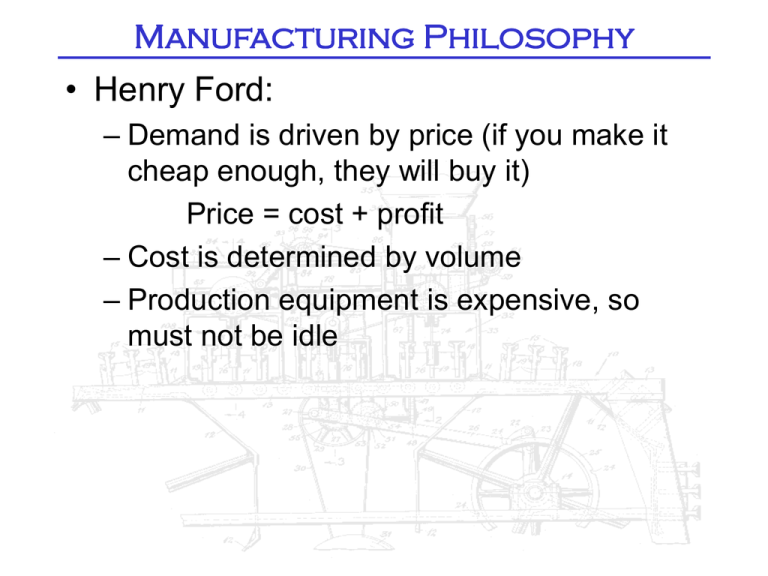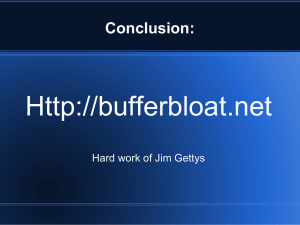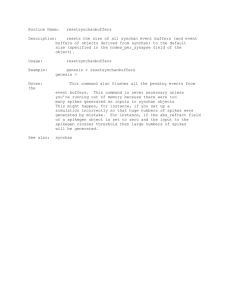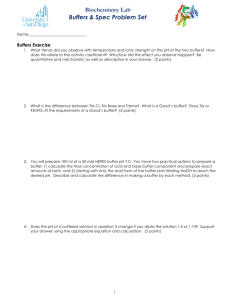Manufacturing Philosophy • Henry Ford:
advertisement

Manufacturing Philosophy • Henry Ford: – Demand is driven by price (if you make it cheap enough, they will buy it) Price = cost + profit – Cost is determined by volume – Production equipment is expensive, so must not be idle Henry Ford’s Method • Minimizing production cost – Design specialized, efficient machines – Run the expensive machines at maximum rate – Make large batches of parts • lowers percentage of time spent with setup • covers scrap parts • covers supplier delivery problems – Develop complex formulas for batch size and buffers between machines Batches and Buffers • Assembly operations can take a variable amount of time – Slowest operation sets cycle time for entire production line if there are no buffers – human fatigue – unpredictable operations (such as calibration) – variations between product models or options – malfunctions or other stoppages • A buffer is an empty space where parts wait for the next machine Batches and Buffers • Stations downstream of stopped/slow machine keep working until upstream buffer is empty. • Stations upstream of stopped machine keep working until downstream buffer is full. • One station is the slowest - “bottleneck” – buffer upstream of bottleneck must never be empty – buffer downstream of bottleneck must never be full Batches and Buffers • With no buffers, if any station stops, bottleneck stops • With one buffer, probability of a stop somewhere causing bottleneck to stop drops to 0.5. More buffers drop probability more. • So, buffers anywhere in the line are there to keep the bottleneck machine running! • If machines are similar in speed, buffers take a long time to refill after a • • • • • Problems with Henry Ford’s Method Work-in-process inventory (batches of parts) ties up money Changes in demand lead to unneeded parts Faulty processes lead to large amounts of scrap Changes in customer preferences lead to expensive machine obsolescence Long delay from order to finished product Taiichi Ohno’s Method (Toyota) • Toyota was short on capital money – Couldn’t afford large work-in-process inventory – Couldn’t afford specialized machines • Decided to build only what customer demanded • Let the customer set the price profit = price - cost • Machines depreciate, labor cost is constant – keep the people busy, even if machines are sometimes idle Toyota Production System • Inventory is the enemy – no buffers between machines – single piece part flow – no scrap or breakdowns permitted • bad parts must be recognized immediately • any malfunctions must be immediately analyzed and the causes fixed – setup times must be very short – transport of parts must be very efficient – product model mix handled by production smoothing Toyota Production System • Production smoothing – Example: orders for 50% sedans, 30% vans, 20% pickups – Don’t make a batch of sedans, then a batch of vans, then a batch of pickups – Instead, interleave them: • SPSVSPSVSV SPSVSPSVSV... – What if it takes longer to make a van than a sedan or a pickup? • interleaving gets more complicated • add an extra V to the cycle occasionally




